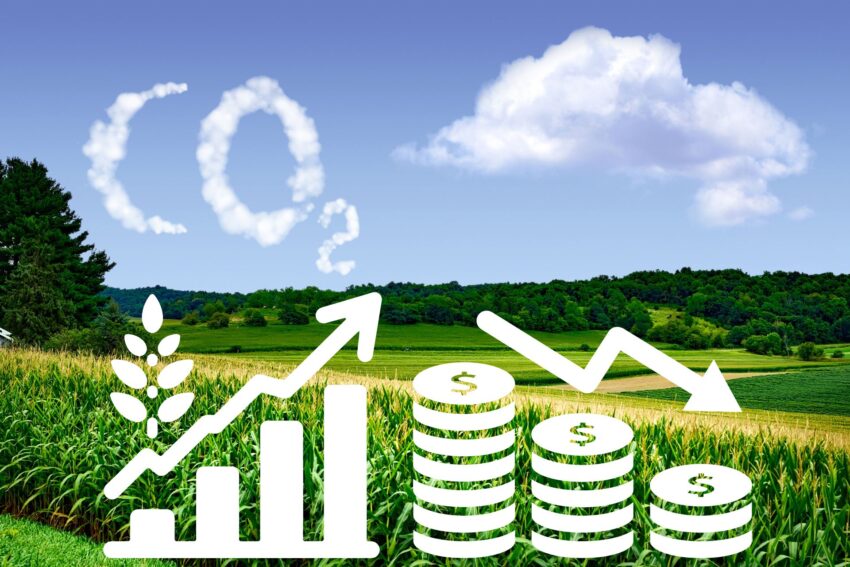The October WASDE (USDA’s World Agricultural Supply and Demand Estimates) comes out on Friday at noon and many people are eagerly anticipating the latest numbers. It still seems like the US will see record-setting corn and soybean yields. Despite dire predictions from climate change alarmists, this year’s data suggests resilience and an unexpected boon in agricultural productivity.
Corn is expected to hit an all-time high yield of 183.1 bushels per acre, while soybeans are anticipated to reach 53.2 bushels per acre, both setting national records. These figures come at a time when people constantly watching the TV might expect the opposite due to various environmental challenges, including the constant talk of “climate change” and the droughts and hurricanes affecting agricultural states.
Contrary to the narrative that ‘climate change’ would universally harm agriculture, there’s plenty of evidence suggesting that it is contributing to these record yields. Increased CO2 levels, supposedly one of the most worrying effects of ‘climate change,’ have been shown to enhance photosynthesis in C4 plants like corn, leading to higher yields. This phenomenon, often called the “CO2 fertilization effect,” involves higher CO2 levels helping plants grow faster and larger, assuming other conditions remain favorable.
U.S. Record corn yields (how much each acre produces).
Corn loves CO2. The more CO2, the better. The U.S. produces so much corn that we put 1/3 of it in our gas tanks as ethanol. https://t.co/7TYnmY6fpM pic.twitter.com/1dOyfE5bs9
— Frank Lasee @truthinenergyandclimate (@lasee_frank) October 8, 2024
Moreover, warmer temperatures, when not extreme, can extend growing seasons, allowing for more photosynthesis and, consequently, higher crop yields.
While the overall narrative focuses on record yields, it’s not without acknowledging the regional disparities. Droughts, as highlighted by the US Drought Monitor, have affected significant portions of corn and soybean-growing areas. Yet, the resilience of these crops, backed by advanced agricultural practices like irrigation, drought-resistant seeds, and better management practices, has mitigated what could have been catastrophic losses.
However, these record yields come with a catch. The economic landscape for farmers remains fraught with challenges. Despite the increased production, farm incomes are forecasted to decrease. This paradox arises from several factors:
Market Saturation: With record yields, supply outpaces demand, leading to lower commodity prices.
Input Costs: The costs of seeds, fertilizers, and fuel have surged, squeezing profit margins even when yields are high.
Trade Policies: International trade tensions and fluctuating policies impact export markets, crucial for commodities like soybeans.
On platforms like X, discussions range from celebrating these achievements in agricultural technology and resilience to debates over the role of climate change. Some users argue that these yields are a testament to human ingenuity in adapting to changing environments, while others worry about the ‘sustainability’ of such practices in the long term, especially with water resources. Meanwhile, farmers continue to do what they do, trying their best to make a living while feeding the world.
And by climate change. More CO2 in the air, higher temperatures, less cold extremes: all favourable for higher yields. Climate change has caused significant greening of the Earth. It would be hard to invent a reason why this would not work for agriculture as well.
— Arnout Jaspers (@Focusscience1) October 6, 2024
The agricultural landscape of 2024 in the US presents a complex picture: record yields amidst economic struggles for farmers, all while we are given dire warnings about climate change and how agriculture contributes to it. While warmer temperatures and higher CO2 might be playing into the hands of crop yields, the broader economic context paints a more challenging reality for those who till the land. This year’s agricultural story is not just about numbers but about adaptation, resilience, and the ongoing debate over how best to navigate the future of farming.


